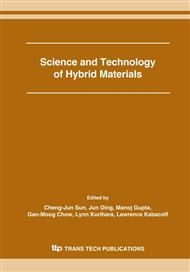p.111
p.115
p.119
p.123
p.127
p.131
p.135
p.139
p.143
Finite Deformation Behavior of Biological Soft Material on Cartilage Anisotropy under Loading Conditions
Abstract:
Cartilage and bone are specialized connective tissues composed of roughly the same material: cell embedded in an extracellular matrix, permeated by the network of fibers. Then the properties of cartilage are anisotropic and inhomogeneous structure. At the same time, the structure of cartilage is rather porous allowing fluid to move in and out of the tissue. Thus the properties of cartilage were changed with the fluid content. The objective of this study is to demonstrate that the biomechanical properties of the pericellular matrix vary with depth from the coated cartilage surface, and observed regions of cartilage failure. This objective is achieved by solving problems with the finite element method. The conceptual model was subjected to the boundary conditions of confined compression on porous of cartilage anisotropy. The experimental results were demonstrated that neither the Young’s modulus nor the Poisson’s ratios exhibit the same values when measured along the loading directions. The results were supported an essential functional property of the tissue which the glenoid surface may be susceptible to cartilage degeneration.
Info:
Periodical:
Pages:
127-130
Citation:
Online since:
April 2006
Authors:
Keywords:
Price:
Сopyright:
© 2006 Trans Tech Publications Ltd. All Rights Reserved
Share:
Citation:


